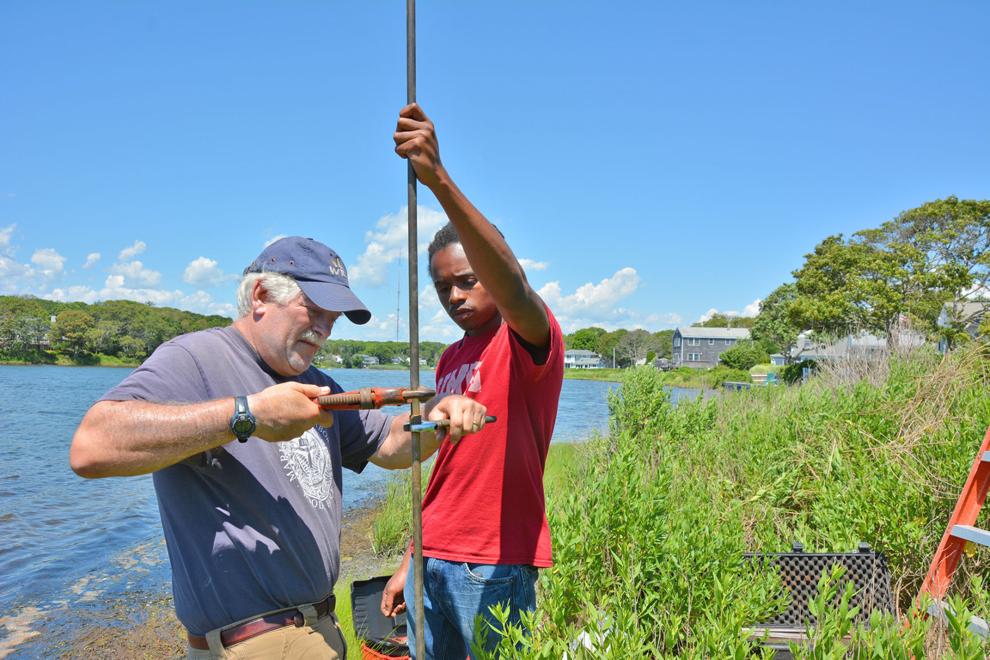Published online by The Falmouth Enterprise May 16, 2025, by Katie Nelson
Kenneth Foreman and Wyntin Goodman prepare a sampling well, consisting of nylon tubing, to be installed on the shore of Little Pond for a study to monitor nutrient levels in the groundwater before and after sewering in the area in this Enterprise photograph from July 2015. (Enterprise file photograph/Andrea F. Carter)
Kenneth H. Foreman, research scholar of the Marine Biological Laboratory (MBL) and member of the water quality management committee, said it is important to understand just how poor the health of the Little Pond estuary was before sewering.
The narrow estuary has seen approximately 65% decrease in nitrogen loading in the past nine years since sewer construction and connection began in 2016. Little Pond is fed by groundwater and has a very narrow inlet to Vineyard Sound through Bristol Beach.
In the neighborhoods along Little Pond, 1,600 homes and businesses contributed to nutrient loading through septic systems leaching into the groundwater. The only ways to reduce nutrient loading in Little Pond, Dr. Foreman said, are to export into the ocean or denitrify. Preventing nitrate from entering the groundwater by installing sewers has proven a successful method, but the pond is not yet at full health.
Since residents have connected to the sewer, 0.97 pounds of nitrogen per acre of estuary area per day has been reduced to 0.34 pounds of nitrogen. The target to reach for, known as the total maximum daily load, is 0.25 pounds per acre per day.
“We’re getting close to the target,” Dr. Foreman said.
Before the Little Pond sewer project was initiated, Little Pond was ranked fifth in a 2010 study published in the scientific journal Elsevier of 74 of the most nitrogen-impaired estuaries in southern New England.
When construction on the sewer began, 12 testing wells were installed by Dr. Foreman, his colleagues and college students, mostly from the Woods Hole Partnership in Education Program (PEP) and the Semester in Environmental Sciences (SES) program.
There have been visible signs of improvement in the estuary. Eel grass, an indicator of a healthy pond, has been expanding in Little Pond, Dr. Foreman said.
Dr. Foreman added that areas of zero oxygen have decreased. Hypoxic conditions that make for unhealthy natural inhabitants of the pond, like shellfish and seagrass, have improved. Dr. Foreman said he is hopeful that similar signs of improvement will be seen at Perch Pond Inlet in Teaticket, northeast of Little Pond.

